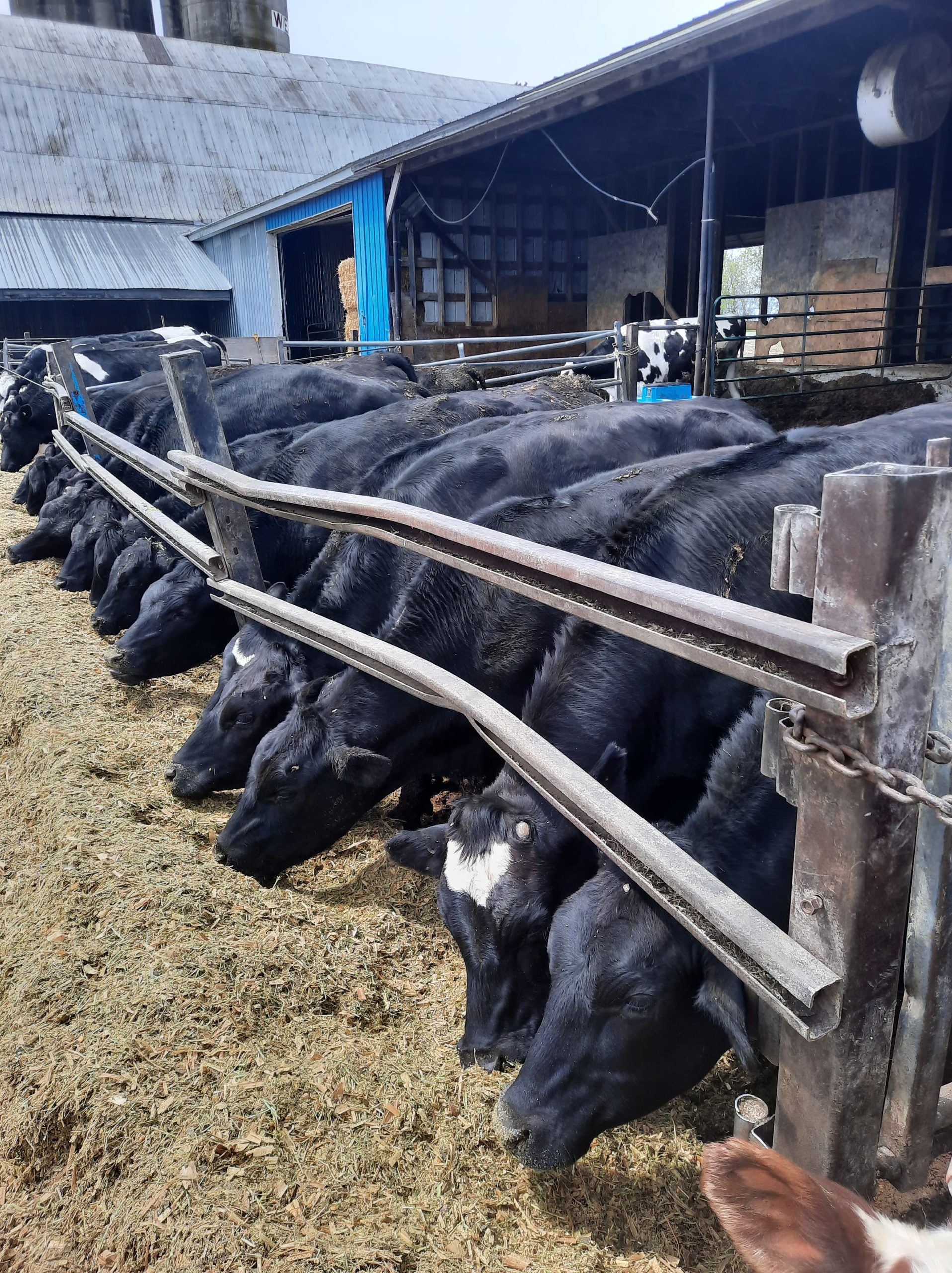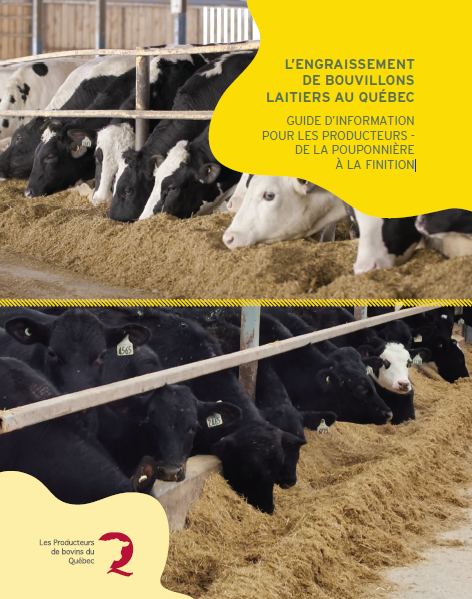 Breeder-Finishers
Breeder-Finishers
In connection with the beef sector strategic plan, the PBQ organized an information session in April 2025. The purpose was to provide dairy producers with information and tips on fattening and finishing their dairy calves into beef animals both efficiently and profitably.
The event was designed for producers who either already fatten their dairy calves into beef animals or are considering this option. The issue was debated by a panel of breeder-finishers who work with dairy-beef crosses. Producers in attendance also had the opportunity to attend presentations on feed, genetics, and health.
The presentations are available below.
|
The ins and outs of dairy beef |
Dairy beef breeder-finisher |
The ABCs of feed for dairy calves |
|
Go further and faster when using |
Health and implants in dairy calves |
Information guide for producers –
From nursery to finishing
This guide aims to inform producers interested in the fattening of dairy steers in Quebec about the specifics of this production. It includes information on the North American beef market, the characteristics of dairy steers, the management of these steers at different production stages, and the targeted markets.
Click below to view the three web capsules that accompany this information guide.
|
The Specificities of Dairy Steers (french) |
Growth Phases (french) |
The Specificities of Carcasses (french) |
Webinar – Finishing Holstein cattle: a market opportunity for Quebec?
Thanks to various efforts on the part of the Producteurs de bovins du Québec, finishing protocols have been written and adapted for Quebec Holstein farms. These are based on an American model, a market in which over 5 million dairy beef cattle are produced each year. The need to seriously analyze the potential of developing such a sector in the province is growing.
The fed cattle sector joins with the cull cattle and bob calf sector in presenting this first webinar (in French) in the series on Holstein finishing. This introductory session focuses on the success factors and key points for interested producers to know, in addition to presenting an analysis of profitability in a typical market context.
 Youtube
Youtube Facebook
Facebook

